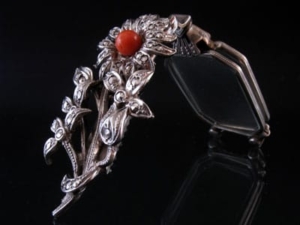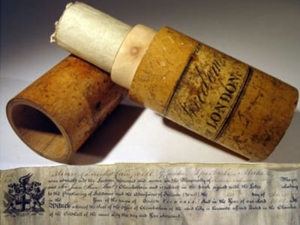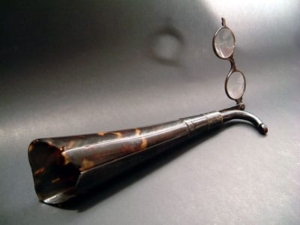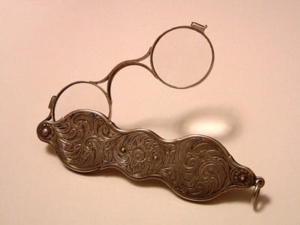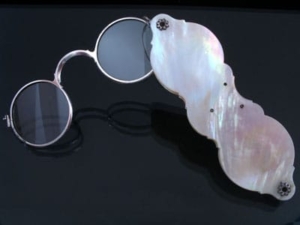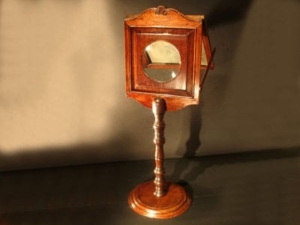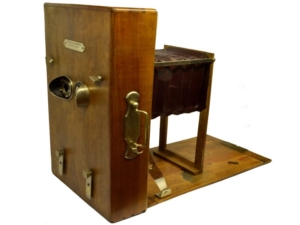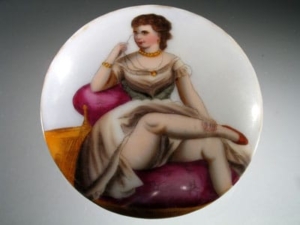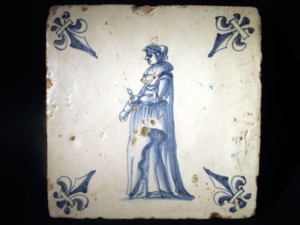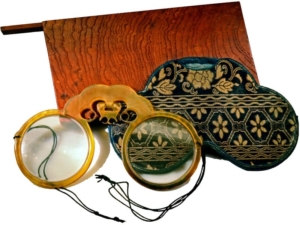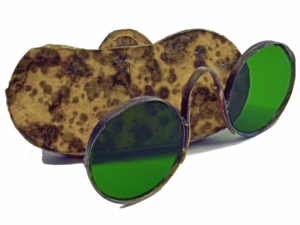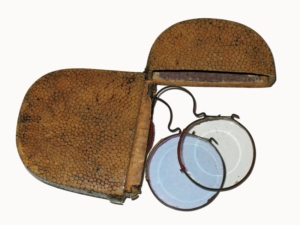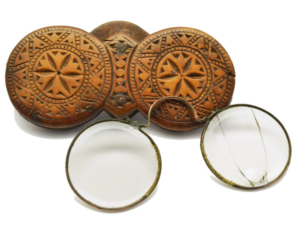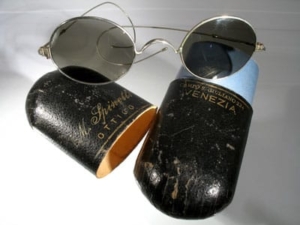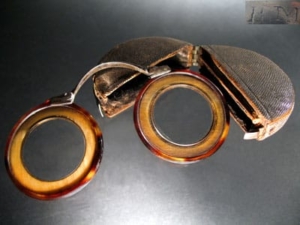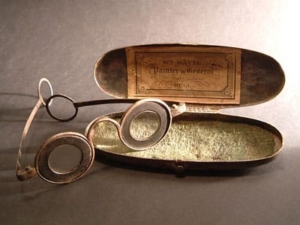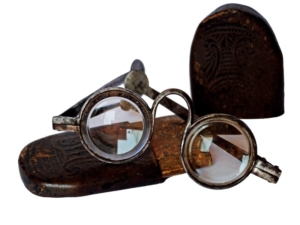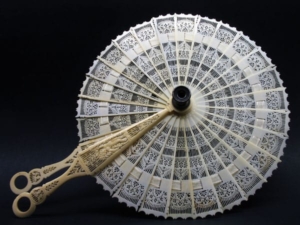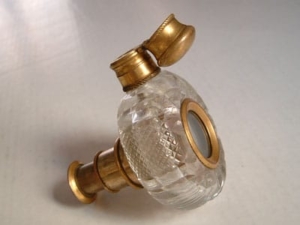Leather bow spectacles with iron bridge. Nord european area, England early XVIII century. Rare and extremely delicate nose spectacles. The thickness of the frame, measuring less than two millimeters , and the flexible iron bridge fastened by rivet pins, made this frame extremely lightweight and elastic but at the same time, not very resistant. The lenses are particularly oxidized. Intransparency numerous micro air bubbles trapped in the glassy mass are visible, which is typical of the earliest productions. The spectacles are contained in a contemporary case made of boiled leather, and embellished with dotted diamond shapes with longitudinal and parallel lines obtained by hot pressure.
Germany, about 1770. The peculiarity of these two copper glasses is the construction of the lens called ”facetten glaser”, due to the type of manufacture. The glasses with yellow silk on the nose are very rare, as it is made with plano lenses. The lenses are slightly darker but not too much to protect from the sun and that’s why the glasses was described as ”conservative”. Used to preserve the eyes during the reading from the white paper. Held in their double ray-skin case.
Nurnberg copper bow spectacles with yellow thread, in the nose area, to reduce the slipping. Lenses signed ”London” to guarantee the high glass quality. Contained in a trilobate and carved boxwood case, from northern Italian appennines. Consists of two lamine retained by iron nails and a lower leather strip that acts as a locking and stopping of the spectacles.
Center Mediterranean area, Syria or Candia XVIII century. Silver folding bow spectacles. Two dolphins or Triton are the ornamental theme for the arms of these pivoted spectacles. Their heads create the hinges of eyerings conjunction and the locking pin designes the eye of the fish. Contained in a brass and silver banjo case, is characterized by numerous engravings that imaginatively represent fish, snakes and birds, inspired by the post Byzantine miniature typical of Greek decorations. On the lid there is an inscription most likely subsequent to the production of the object: X MAMA DAM ASKENOS, 1816 which translated is, Hadji: noble and rich, Mama: male name, Damaskenos: from Damascus (surname), definitely the name of the user or to whom was given the object. Due to the type, the origin date is certainly earlier than the date engraved.
Italy, 1751. Incredible piece of iron spectacles temple. The right lens signed ”Camillo Lazzarini fecit 1751 Pesaro”, indicates that it is one of the first temple spectacles depicted in the British trade card after the spiral temple from Scarlett. The power of the lenses is about -18.00 diopters. Content in impressed leather case.



